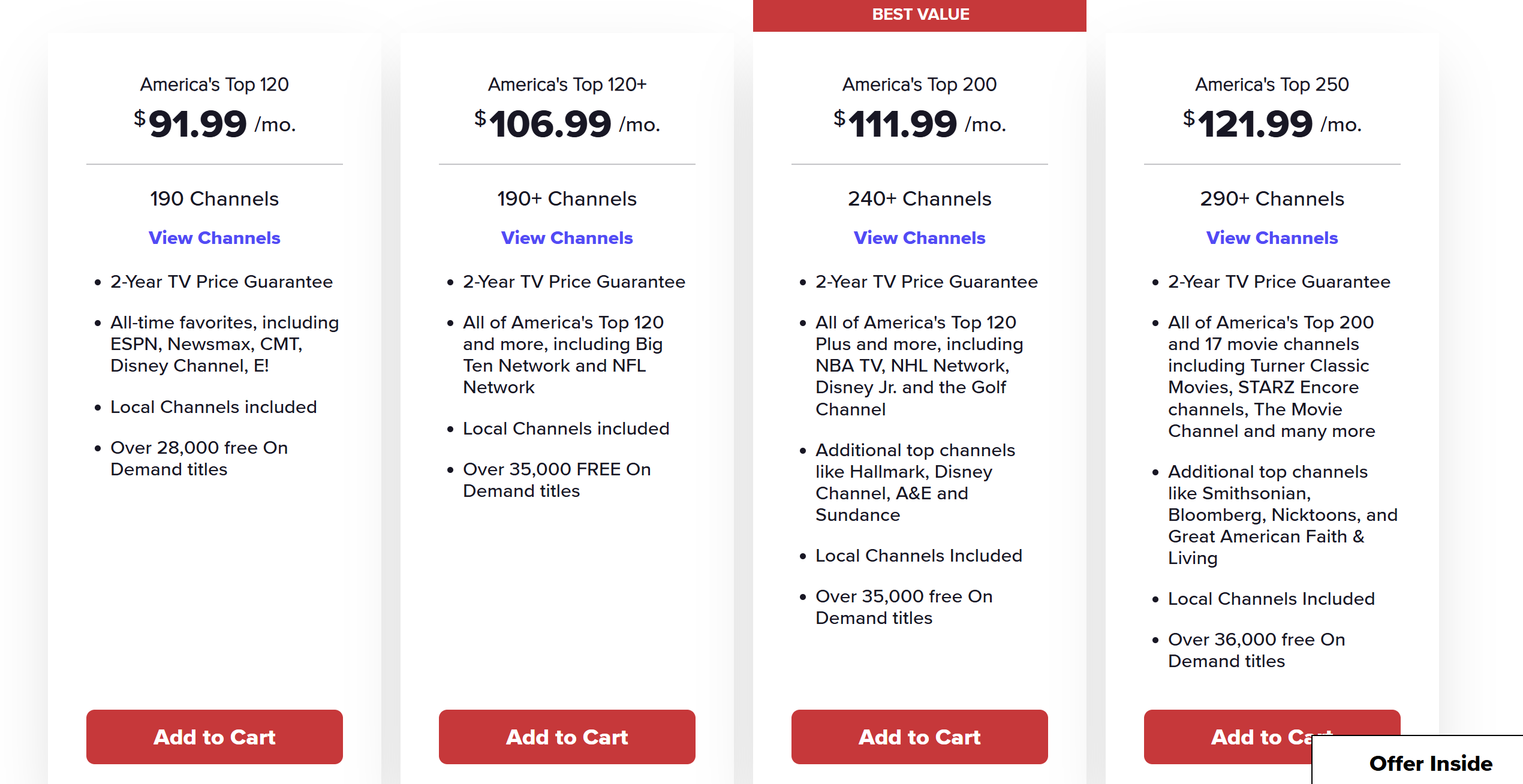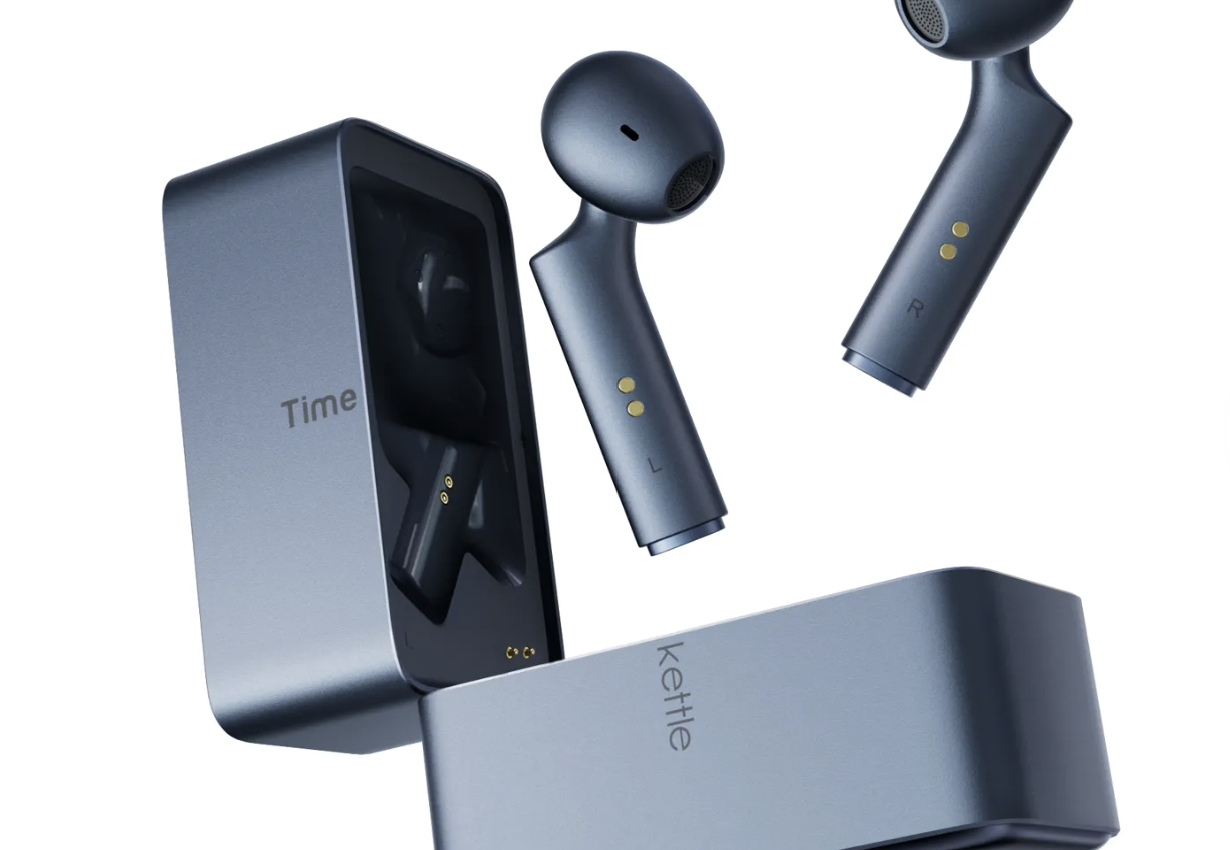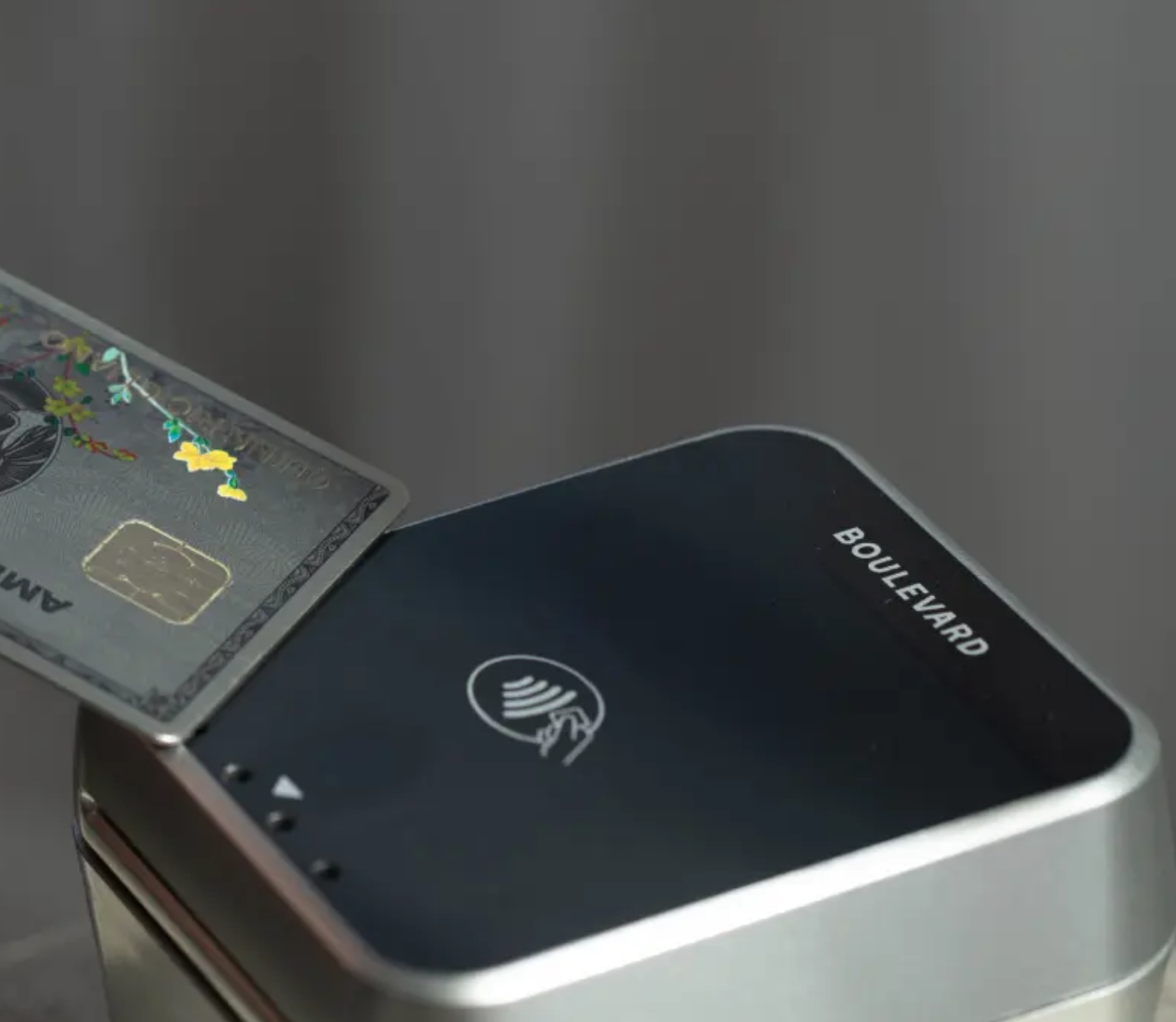위성방송 디시, '번들(Bundle)을 위한 가장 좋은 상품은 방송' FAST로 승부 본다(Dish, takes on FAST's 'Best Product for Bundles'
에코스타, 2024년 유료 TV 가입자 감소 불구… “2025년은 결합 상품으로 반등 기대”
미국 위성방송 사업자 에코스타(EchoStar)가 2024년 4분기 실적에서 자사의 대표 서비스 디시 네트워크(Dish Network)의 유료 TV 가입자가 감소했다고 발표했다.
그러나 경영진은 “가입자 감소에도 불구하고 이탈률(Churn), 가입자당평균매출(ARPU), 가입자 확보 비용(SAC) 등은 전년 대비 개선되는 성과를 보였다”고 강조했다. 에코스타는 내년인 2025년부터 무선 이동통신(Boost Mobile)과 위성 인터넷(Hughes Network Systems), 그리고 유료 TV(위성방송·가상 유료방송)를 더욱 긴밀히 결합해 교차 판매를 강화함으로써 가입자 이탈을 방지하고 수익성을 회복하겠다는 전략이다.
EchoStar Reports Lower Pay TV Subscriber Figures in 2024, Banking on Wireless and Broadband Bundles in 2025
(March 3, 2025) – U.S. satellite broadcaster EchoStar disclosed its 2024 financial results, revealing a continued drop in pay TV subscribers under its Dish Network brand. While the decline in subscribers caused revenue to contract year-over-year, the company highlighted improvements in several key metrics—such as churn rate, average revenue per user (ARPU), and subscriber acquisition cost (SAC)—compared to 2023.
Looking forward, EchoStar executives affirmed their strategy for 2025: to intensify cross-selling among wireless services (Boost Mobile), satellite broadband products (Hughes Network Systems), and Dish’s pay TV offerings. By unifying these assets, EchoStar hopes to stabilize subscriber losses and renew growth momentum in an increasingly competitive U.S. media and telecommunications landscape.
■ 2024년 유료 TV 가입자 수, 전년 대비 감소
에코스타는 2024년 4분기 기준 디시 네트워크의 순 유료 TV 가입자가 전년 동기 대비 25만 3,000명 줄었다고 밝혔다. 이는 3분기(4만 3,000명 감소)에 비하면 큰 폭으로 감소한 수치이지만, 전년 동기(31만 4,000명 감소)와 비교했을 때는 개선된 결과다.
2023년 말 853만 명이었던 디시 네트워크의 전체 유료 TV 가입자는 2024년 말 778만 명으로 축소됐다. 이 중 위성방송인 디시 TV(Dish TV) 가입자는 569만 명, 가상 유료방송 서비스(vMVPD)인 슬링 TV(Sling TV) 가입자는 209만 명이다. 4분기만 놓고 보면 슬링TV가 5만 명, 디시TV가 20만 명 각각 줄어들었다.
에코스타는 “2024년에는 양질의 가입자 확보 전략에 집중한 결과, 가입자 해지율 자체는 낮아졌다”면서도 “전체 가입자 수 감소로 인한 매출 하락은 불가피했다”고 설명했다.
■ “FAST로 희망 찾는다”…스트리밍·FAST 통한 가입자 방어
기존 위성방송 가입자는 줄었지만, 인터넷 기반의 가상 유료방송 서비스와 FAST(Free Ad-Supported Streaming TV) 사업인 슬링TV(Sling TV)의 가입자는 소폭이나마 증가했다는 점이 2024년의 주목할 부분이다. 실제로 2023년 말 206만 명이던 슬링TV 가입자는 2024년 들어 증가 추세를 보이며, 위성방송의 감소분을 어느 정도 보완하고 있다.
에코스타는 “슬링TV를 비롯한 온라인 스트리밍 기반 비즈니스는 향후 지속적으로 강화할 계획”이라며 “전통 위성방송에서 이탈한 고객을 대체하고 수익의 새로운 축으로 육성하고 있다”고 강조했다.
■ 매출 10억 달러 이상 줄어… 유료 TV 부문 영향 커
가입자 하락세에 따라 전체 매출도 감소세를 보였다. 에코스타는 2024년 총 매출을 약 158억 달러로 집계하며, 전년(약 170억 달러) 대비 12억 달러가량 줄었다고 보고했다. 회사 측은 “매출 감소의 주요 원인은 가입자 하락이며, 그중에서도 유료 TV 부문의 감소 폭이 크다”고 언급했다.
4분기 총 매출은 전년 동기 대비 5% 감소한 40억 달러 수준에 머물렀으며, 이 가운데 26억 달러가 유료 TV 매출이다(전년 동기 약 28억 달러). 유료 TV 부문이 여전히 회사의 핵심 매출원이나, 감소 추세가 두드러지며 전체 실적에도 부정적인 영향을 끼친 것이다. 다만 유료 TV OBIDA(Operating Income Before Depreciation and Amortization)는 4분기에 약 8억 달러를 기록했고, 2024년 전체로는 29억 8,000만 달러에 달했다.
■ “AI 기술로 이탈률·마케팅 비용 모두 줄였다”
에코스타 경영진은 이처럼 어려운 시장 상황에도 ARPU(가입자당평균매출)이 전년 대비 4.2% 상승하고, SAC(가입자 유치 비용)가 하락했으며, 이탈률(Churn)도 개선된 점을 강조했다.
디시 네트워크의 비디오 서비스 부문 부사장 겸 그룹 사장인 게리 샨맨(Gary Schanman)은 “독점적인 AI 및 머신러닝 기능을 활용해 양질의 고객을 선별, 유치, 유지할 수 있었다”라며 “마케팅 비용을 크게 절감하는 동시에, 맞춤형 이메일 캠페인 등 고객 맞춤형 접근으로 이탈률을 낮출 수 있었다”고 설명했다.
이를 통해 디시TV의 2024년 연간 해지율(Churn)은 1.46%로, 전년 대비 23%포인트나 개선됐다. 또한 Sling TV의 이탈률 역시 전년 대비 141%포인트나 줄어들어, “팬데믹 이후 가장 낮은 수준”(샨맨)이라고 전했다.
■ 디렉TV 합병 무산 이후… “다른 서비스와 비디오 결합에 주력”
2024년 미국 위성방송 1·2위 사업자인 디렉TV(DirecTV)와 디시 네트워크(Dish Network)는 합병을 추진했으나 결국 무산됐다. 디시 네트워크는 이에 대해 “합병 협상 결렬 후에도 비디오는 여전히 포트폴리오의 주요 축이며, 이동통신·인터넷과의 교차 판매를 통해 수익 체질을 개선하겠다”라고 밝혔다.
특히 디시는 5G 무선 이동통신망 구축에 박차를 가하는 중이다. 이미 자사의 휴대전화 브랜드인 ‘부스트 모바일(Boost Mobile)’과 기존 무선 소매 사업을 통합했고, 티모바일-스프린트(T-Mobile-Sprint) 합병 과정에서 미국 내 ‘제4의 전국 이동통신 사업자’로서 자리매김하겠다는 계획을 추진 중이다.
에코스타의 CEO 겸 사장인 하미드 아카반(Hamid Akhavan)은 최근 투자자 대상 컨퍼런스 콜에서 “방송(동영상) 서비스를 이동통신과 초고속 인터넷 상품에 통합해 제공하는 것이 올해와 내년 성장 전략의 핵심”이라며 “2025년에는 이 전략이 시장에서 가시적인 성과로 이어질 것”이라고 기대감을 드러냈다.

■ “무선통신·위성 인터넷·방송 결합해 ‘차별화된 상품’ 제공”
실제로 디시는 부스트 모바일 앱 내에서 슬링TV 콘텐츠를 제공하는 통합 서비스를 선보였다. 이동통신 가입자들은 별도 앱 설치 없이도 부스트 모바일 앱에서 FAST(광고 기반 무료 스트리밍) 및 유료 방송 콘텐츠를 즐길 수 있어, 편의성과 체류 시간을 높이는 효과를 기대하고 있다.
이와 함께 휴즈(Hughes) 위성 인터넷과 디시TV를 결합한 번들 상품도 선보였다. 기존 케이블이나 광인터넷이 닿지 않는 지역에서 위성 인터넷과 위성 TV를 한꺼번에 이용할 수 있어, 추가 시장 개척에 유리하다는 평가다.
샨맨은 이에 대해 “비디오를 다른 서비스에 통합함으로써 무선 시장 성장도 동시에 꾀할 수 있다”라며 “앞으로도 이동통신 가입자에게 차별화된 콘텐츠 경험을 제공하는 것이 디시 전체 성장을 견인할 것”이라고 강조했다.
EchoStar의 Dish Network 2024년 실적과 2025년 전략을 표로 정리하면 다음과 같다.
| 구분 | 항목 | 세부 내용 |
|---|---|---|
| 유료 TV 가입자 수 | - 2024년 말: 778만 명 - 2023년 말: 853만 명 (감소) | |
| 전체 매출 | - 2024년: 158억 달러 - 2023년: 170억 달러 (감소) | |
| 주요 지표 개선 | - 이탈률(churn) 감소 - 가입자당 평균 수익(ARPU) 증가 - 가입자 확보 비용 감소 | |
| ARPU 상승 | 유료 TV 부문 연간 ARPU 전년 대비 4.2% 상승 | |
| AI 및 머신러닝 활용 | - 고품질 고객 확보 및 유지 - 마케팅 비용 감소 - 이탈률 개선 | |
| 비디오 서비스 통합 | - Boost Mobile 및 Hughes 위성 브로드밴드와 통합 - Boost Mobile 앱에 Sling TV 콘텐츠 통합 | |
| 제품 번들링 | - 위성 연결, 콘텐츠 서비스, 5G 모빌리티 자산 결합 - 차별화된 제품 제공 예정 - 2025년 더 많은 발전 예상 | |
| Boost Mobile 성장 지원 | - 콘텐츠 경험 심화 통합 - 무선 사업 성장 지원 |
■ 경쟁사도 잇따라 번들 강화…케이블 1위 차터(Charter)의 대응
한편, 미국 케이블 업계 역시 유료 TV·초고속 인터넷·이동통신을 결합해 ‘슈퍼 번들’을 강화하고 있다. 미국 1위 케이블 사업자인 차터(Charter)는 2024년 9월, ‘Life Unlimited’라는 새로운 번들 중심의 마케팅 전략을 발표했다.
특히 2025년 초부터 ‘스펙트럼 셀렉트(Spectrum Select)’라는 대표 케이블TV 티어 구독자들에게 월 80달러 상당의 스트리밍 서비스(SVOD)를 추가 비용 없이 제공할 계획이다. 디즈니+(Disney+), ESPN+, 피콕(Peacock), 맥스(Max), 디스커버리+(Discovery+), 파라마운트+(Paramount+), AMC+, Vix 등 광고 기반 서비스가 모두 포함되어, 소비자 유인을 극대화하고 있다.
디시 네트워크 역시 이러한 케이블·통신 대기업들의 다각화된 번들 공세에 대응하기 위해, 2025년부터 “더 많은 상품을 결합하고 더 적극적으로 마케팅”하는 방향으로 나아갈 전망이다.
■ 2025년, 결합 서비스 본격화로 반등 노린다
결과적으로 에코스타와 디시 네트워크는 2024년 유료 TV 가입자 감소를 겪었지만, 교차 판매(Cross-Selling)를 통한 새로운 성장 동력을 마련했다는 점에서 한숨 돌렸다고 평가할 수 있다. AI 기반 고객 유지 전략, 이동통신·위성 인터넷과의 결합 상품 등은 이미 가입자 해지율 개선과 가입자당평균매출 상승이라는 가시적인 성과를 내고 있다.
아카반 CEO는 “2025년은 비디오와 이동통신, 인터넷, 그리고 미래의 5G 서비스를 결합해 차별화된 제품을 만들어내는 시기가 될 것”이라며 “여기에 더해 우리만의 AI·머신러닝 역량을 통해 가입자 맞춤형 서비스를 강화해 시장에서 경쟁우위를 확보하겠다”고 밝혔다.
스트리밍 서비스가 대세인 시장에서 전통 위성방송 사업자의 미래를 낙관하기는 쉽지 않지만, 새로운 비즈니스 모델과 기술을 적극 도입해 반등의 기회를 잡으려는 디시 네트워크의 시도에 업계 관심이 모인다. 2025년에는 디시가 “위성방송과 무선, 위성 인터넷을 결합한 완전한 형태의 통합 솔루션”을 얼마나 성공적으로 시장에 안착시키느냐가 관건이 될 전망이다.
Weaker Pay TV Base but Improved Churn and ARPU
EchoStar reported a net loss of approximately 253,000 pay TV subscribers in the fourth quarter of 2024. This figure, which includes both the traditional Dish TV satellite service and the Sling TV virtual pay TV (vMVPD) platform, marks a year-over-year improvement compared to the net loss of 314,000 in the same period of 2023, but a steeper decline than the 43,000 net subscriber reduction in the third quarter of 2024.
By the end of 2024, total pay TV subscriptions declined from 8.53 million at the close of 2023 to 7.78 million, comprised of 5.69 million Dish TV users and 2.09 million Sling TV users. Within the fourth quarter alone, Sling TV lost around 50,000 subscribers, and Dish TV fell by 200,000. Despite these subscriber losses, EchoStar noted that the overall churn rate has improved compared to the prior year, reflecting a focus on acquiring and retaining “high-quality” customers.
In a statement, Dish Network said, “Although pay TV subscription totals declined, our emphasis on quality subscriber acquisition has helped reduce churn, resulting in fewer net pay TV losses in 2024 compared to last year.”
Sling TV as a Bright Spot and the Role of FAST
While it continued to see declines in traditional satellite subscribers, EchoStar underscored the moderate growth in Sling TV, its vMVPD service, and FAST (Free Ad-Supported Streaming TV) offerings. Sling TV ended 2024 with slightly more subscribers than it did at the end of 2023 (2.06 million), partially offsetting Dish TV’s more pronounced losses. EchoStar views Sling TV and its FAST model, known as Sling Freestream, as critical components in addressing the ongoing consumer migration toward streaming.
Revenue Down Amid Subscriber Declines, But Key Metrics Up
EchoStar reported total 2024 revenues of approximately $15.8 billion, down from around $17.0 billion in 2023. The decline was most evident in the pay TV segment, where losses in subscriber volume led to a 5% year-over-year decrease in fourth-quarter revenue, settling at roughly $4.0 billion. Of that total, about $2.6 billion stemmed from the pay TV business—a decrease from $2.8 billion in the prior-year quarter.
Despite the dip in revenue, the Pay TV OBIDA (Operating Income Before Depreciation and Amortization) stood at about $800 million in the fourth quarter and $2.98 billion for the full year 2024.
EchoStar executives stressed that, even in the face of cord-cutting and new streaming entrants, pay TV ARPU improved by 4.2% year-over-year and SAC declined. Churn also decreased notably:
- Dish TV posted a 1.46% churn rate for 2024, a 23 percentage point improvement from 2023.
- Sling TV’s churn rate similarly saw a 141 percentage point reduction—its lowest since the onset of the pandemic.
According to Gary Schanman, Executive VP and Group President of Video Services, “We leveraged proprietary AI and machine learning to more efficiently identify, acquire, and retain higher-value customers, thereby reducing marketing spend and improving churn metrics.”
Failed DirecTV Merger & Focus on Cross-Bundling
The 2024 results arrive on the heels of a merger attempt between the nation’s two major satellite TV providers—DirecTV and Dish Network—which ultimately collapsed last year. Following this setback, Dish Network reaffirmed its commitment to pay TV as a key piece of its portfolio, now redoubling efforts to integrate video products with its other businesses: Boost Mobile (wireless) and Hughes (satellite broadband).
EchoStar has been building out a 5G wireless network, having already merged its mobile phone business with Boost Mobile, acquired from T-Mobile and Sprint as part of regulatory requirements. Through this, the company aims to become the fourth nationwide facilities-based wireless carrier in the United States.
Hamid Akhavan, EchoStar’s President and CEO, told investors, “Dish’s video services remain an essential component of our product mix, and we intend to better integrate our pay TV offerings with wireless and broadband to enhance the overall value proposition and drive growth in 2025.”
Bundling Strategies Gain Momentum
Dish has recently launched “Boost Mobile app integration with Sling TV”, allowing Boost subscribers to access free, ad-supported Sling Freestream channels directly within the mobile app. This move is designed to increase both user engagement and loyalty to Dish’s wireless service.
Meanwhile, Hughes has offered customers bundles that combine satellite internet with Dish’s pay TV, targeting rural and underserved markets. By bundling services, the company seeks to capture new customers in areas where cable or fiber-based internet is less accessible.
Schanman characterized these integrations as “just the beginning,” pointing to early data showing increased usage and uptake of Sling TV among Boost subscribers. He added, “We’ll continue to more deeply integrate our content experiences into Boost Mobile, driving growth in wireless and enhancing the overall user experience.”
Competitive Landscape: Cable Operators Ramp Up Bundling Too
Cable competitors are similarly stepping up their bundling strategies. Charter Communications, the largest U.S. cable operator by coverage, announced a new marketing initiative called “Life Unlimited” in September 2024. Beginning in early 2025, Charter plans to offer subscribers of its top cable TV tier, Spectrum Select, access to around $80 per month worth of streaming services at no additional cost. This bundle includes Disney+, ESPN+, Peacock, Max, Discovery+, Paramount+, AMC+, and Vix, all with advertising.
Akhavan acknowledged the challenge from cable, saying, “We’re well aware that cable operators are doubling down on their own bundles. EchoStar is also stepping up efforts to create compelling cross-product packages. We’re still in the early stages, but we expect more robust bundle offerings in 2025.”
Outlook for 2025: Deeper Integration and Growth Hopes
Despite ongoing subscriber challenges in the traditional pay TV space, EchoStar’s leadership remains optimistic. The company believes its overarching approach—combining pay TV, 5G wireless, and satellite broadband—can create a differentiated product ecosystem that appeals to a broader customer base.
Akhavan concluded, “In 2025, we expect our integrated approach—leveraging Dish video, Boost Mobile’s wireless network, and Hughes broadband—to become highly tangible in market offerings. Our investment in AI and machine learning will further refine how we target and retain high-value subscribers. We aim to deliver a unique combination of connectivity and content that stands out in a crowded marketplace.”
While it may be challenging for any satellite TV provider to thrive in the era of cord-cutting and streaming, Dish Network’s pivot toward bundling could pave a path for incremental gains and long-term stability—so long as the company effectively aligns its video services with next-generation wireless and broadband technologies. The industry’s attention now turns to whether Dish can translate these strategic moves into subscriber growth and stronger financials when 2025 rolls around.









![[K콘텐츠와 K FAST]](https://cdn.media.bluedot.so/bluedot.kentertechhub/2025/11/zxwbgb_202511241038.jpg)
![[모집]1월 9일~14일 글로벌 AI 스템 캠프(자료집)](https://cdn.media.bluedot.so/bluedot.kentertechhub/2025/11/3kf0x5_202511031830.png)
![[MIPCOM2025]글로벌 엔터테인먼트 트렌드](https://cdn.media.bluedot.so/bluedot.kentertechhub/2025/10/duxlsp_202510170000.png)
![[보고서]생성AI와 애니메이션](https://cdn.media.bluedot.so/bluedot.kentertechhub/2025/09/c49fxu_202509271057.png)


![[보도자료]Kocowa, 유럽 진출 1년 성과](https://cdn.media.bluedot.so/bluedot.kentertechhub/2025/07/d4i5qa_202507142153.png)